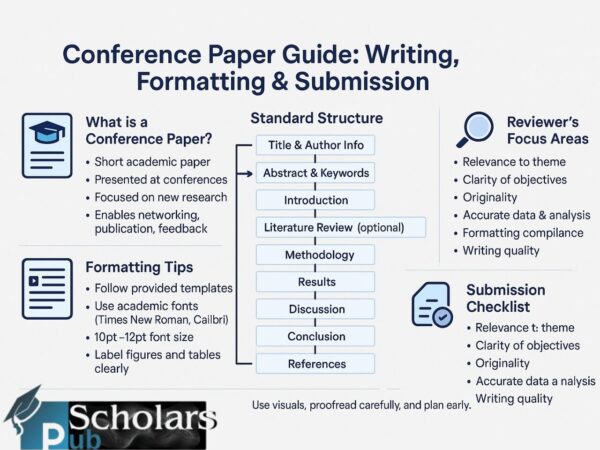- What is a conference paper?
- Why is the format important for conference paper?
- Standard Conference Paper Format: What to Include
- 1.Title and writer details
- 2. Abstract
- 3. Keywords
- 4. Introduction
- 5. Literature Review (optional)
- 6. Methodology
- 7. Result
- 8. Discussion
- 9. Conclusion
- 10. Reference
- Conference Abstract: Structure and Tips
- Suggestions:
- Common mistakes to avoid in conference papers
- How to write a great conference paper: Best Practice
- Conference Paper vs Journal Articles: What is the difference?
- Submission process: step by step
- Digital equipment to help you
- What reviewers see
- Conclusions: Make Your Conference Paper Count
- FAQ's
- 1. What is a conference paper and why is it important?
- 2. How should I structure my conference paper?
- 3. Why is formatting so important in a conference paper?
- 4. What makes a strong abstract for a conference paper?
- 5. What common mistakes should I avoid when submitting a conference paper?
- 6. What do reviewers look for in a conference paper?
I am a seasoned professional with over 9 years of transformative experience in the domains of molecular biology, immunology, and clinical research. With a career that spans from 2006 to 2018, my journey has been marked by a relentless pursuit of scientific excellence and an unwavering commitment to improving healthcare outcomes through groundbreaking research. I have worked at one of India’s premier medical institutions, AIIMS(All India Institute of Medical Sciences), where I contributed significantly to the fields of molecular biology and clinical research. My expertise in protein analysis and genetic studies allowed me to identify potential biomarkers and improve diagnostic accuracy, contributing to better healthcare outcomes for patients. Notably, the research work has been published in prestigious scientific journals such as the Indian Journal of Ophthalmology and the British Journal of Ophthalmology.
Publication in these esteemed journals reflects my commitment to advancing medical science and sharing insights with the global research community. These publications highlight my expertise in areas ranging from gene polymorphism and immune response mechanisms to the effects of chronic drug therapy, all contributing to the larger body of scientific knowledge. My passion for scientific communication led me to pursue an Executive Diploma in Medical Writing from CliMed Research Solutions and Curio Training and Research Institute (CTRI), India. This certification has further refined my ability to bridge the gap between complex scientific research and its practical applications in healthcare. My passion for content writing drives me to continuously create content that derives engagement ,build trust, and leaves a lasting impression on readers”.




